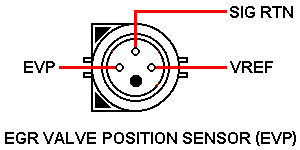ZappyShawrk
New member
Hi everyone!
So first off, this is my first post, I was driven to this forum trying to find answers to my current problem. I did search for a while trying to find exactly what my issue was, but I didn't quite seem to find it. I have never worked on any car or truck, and the used 1989 Ford Bronco I just bought is my first truck, EVER!
And I love it! But it didn't pass smog...
Now, when I bought this beast, it had brand new tires, a brand new engine, motor and transmission, with only about 40,000 miles on the new stuff. The guy who sold it to me had taken it in for a smog pretest, and it passed with flying colors.
I took it in two days ago, and it failed the 25mph test.
Now, I took it to a mechanic, who looked over it for me. He said that everything was checking out fine, that he EGR valve, solenoid, Engine and Motor all looked beautiful, but that something to do with the COMPUTER or SENSOR seemed to not be working (if this makes sense). There is NO VACUUM TO THE EGR VALVE.
I've noticed on some of the other threads that this is a pretty common problem among older Broncos.
My Questions Are:
1) Is there a possibility that when the new engine, motor, transmission were replaced, the wiring for the sensor or computer might not have been hooked up properly? Causing the vacuum to not turn on, and thus, there being no vacuum in the EGR?
2) If it is a simple wiring problem, how would I go about checking, or fixing it? Is it something easy to reach? And is it something someone with little to no experience working on cars might be able to handle as a first project?
3) Is this sort of problem worth taking the truck in to the Ford Mechanic, who is going to charge me an arm and a leg JUST for DIAGNOSTIC, let alone any repair work? Or should any, reasonably priced technician, be able to fix this?
Thanks so much for any help with this, I have little to no knowledge about tech work, but I want to start learning, and since this is the first major issue I've found with my new baby, I'd like to see if I can handle it first. Please let me know how you guys would handle it! And I'm so sorry if this is a re-post! (I definitely did check, first!)
So first off, this is my first post, I was driven to this forum trying to find answers to my current problem. I did search for a while trying to find exactly what my issue was, but I didn't quite seem to find it. I have never worked on any car or truck, and the used 1989 Ford Bronco I just bought is my first truck, EVER!
And I love it! But it didn't pass smog...
Now, when I bought this beast, it had brand new tires, a brand new engine, motor and transmission, with only about 40,000 miles on the new stuff. The guy who sold it to me had taken it in for a smog pretest, and it passed with flying colors.
I took it in two days ago, and it failed the 25mph test.
Now, I took it to a mechanic, who looked over it for me. He said that everything was checking out fine, that he EGR valve, solenoid, Engine and Motor all looked beautiful, but that something to do with the COMPUTER or SENSOR seemed to not be working (if this makes sense). There is NO VACUUM TO THE EGR VALVE.
I've noticed on some of the other threads that this is a pretty common problem among older Broncos.
My Questions Are:
1) Is there a possibility that when the new engine, motor, transmission were replaced, the wiring for the sensor or computer might not have been hooked up properly? Causing the vacuum to not turn on, and thus, there being no vacuum in the EGR?
2) If it is a simple wiring problem, how would I go about checking, or fixing it? Is it something easy to reach? And is it something someone with little to no experience working on cars might be able to handle as a first project?
3) Is this sort of problem worth taking the truck in to the Ford Mechanic, who is going to charge me an arm and a leg JUST for DIAGNOSTIC, let alone any repair work? Or should any, reasonably priced technician, be able to fix this?
Thanks so much for any help with this, I have little to no knowledge about tech work, but I want to start learning, and since this is the first major issue I've found with my new baby, I'd like to see if I can handle it first. Please let me know how you guys would handle it! And I'm so sorry if this is a re-post! (I definitely did check, first!)


